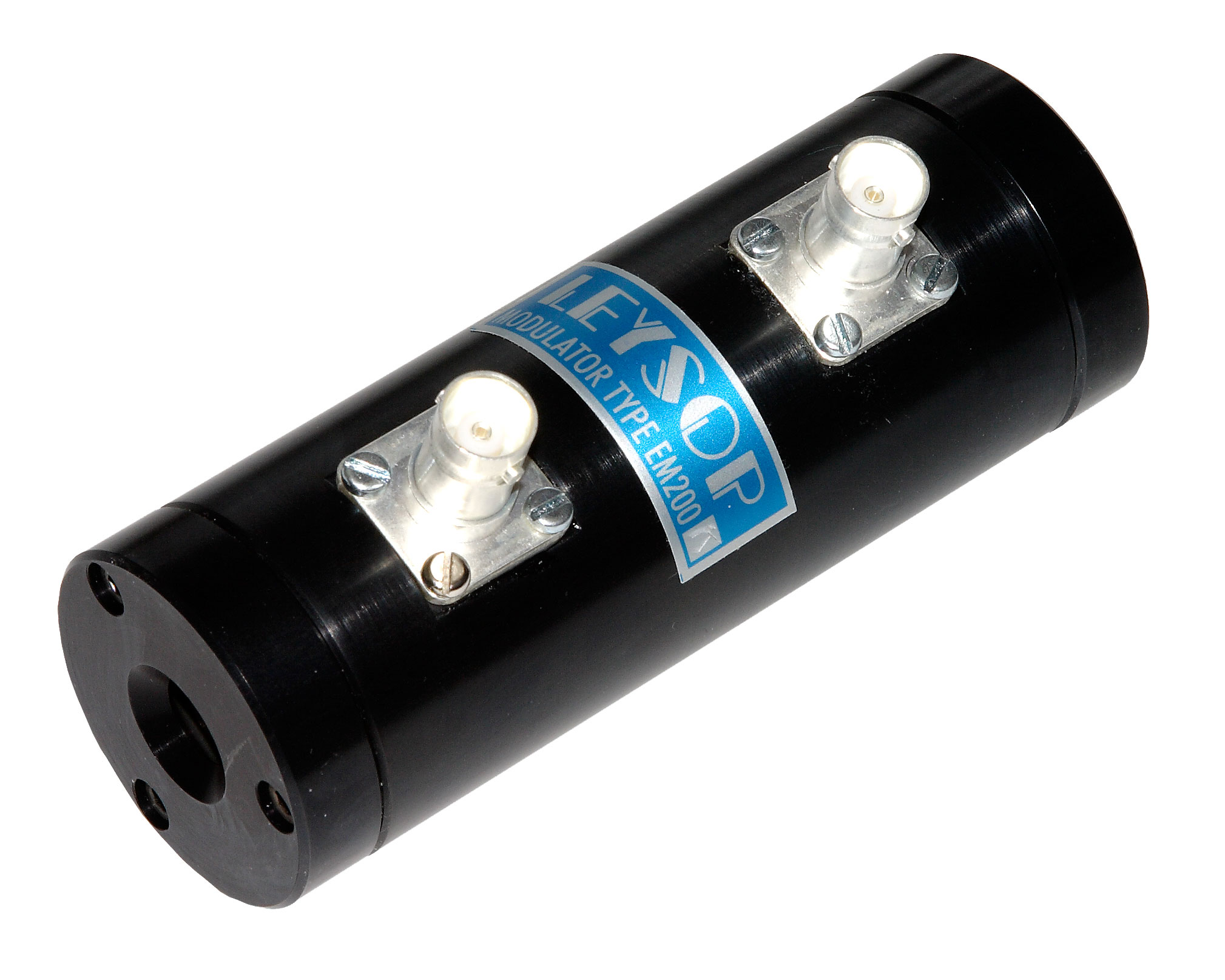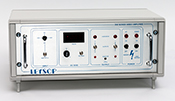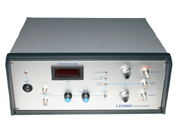Low Voltage Optical Modulators
Transverse field ADP, KD*P and lithium niobate analogue modulators

ADP
ADP modulators may be designed to operate at all wavelengths from the UV into the visible up to around 900nm and are essentially free from piezo-electric resonances. This modulator type has a high degree of temperature stability, but where long term d.c. amplitude is required it should be operated in a constant temperature environment. The modulation frequency is not limited by the device characteristics other than by its electrical capacitance and therefore depends on the drive circuit used. Wide band AR-coatings are used on all components or we can supply fluid filled versions, including ultra-high ransmission types.
One characteristic of the ADP design is that because the optical propagation is not along an axis of symmetry, the extra-ordinary polarized rays "walk-off" so it is necessary to use four matched crystals, suitably orientated in order to compensate both for the walk-off as well as the static birefringence. This does impact slightly on maximum transmission as there are twice as many crystal surfaces compared to the other modulator types.
KD*P
Transverse KD*P electro-optic modulators are able to give higher thermal stability beyond that obtained by the ADP type, largely because they do not require the same four-crystal arrangement. The transmission range is also extended to around 1200nm and its extinction ratio is also better than that obtained from its ADP counterpart. It does however display piezo-electric characteristics so is not such a good choice for high frequency modulation in the hundreds of kHz to low-MHz range, although with resonance damping techniques performance here may be improved. These devices also may be supplied either dry with suitable AR coatings or fluid filled, including ultra-high transmission versions.
Lithium niobate
Lithium niobate is a high temperature grown optical material which unlike the ADP and KD*P crystals is not water soluble. Although it cannot be operated safely below 500nm (and up to ~800nm with caution to use low optical powers only), above this range it features good transparancy out to ~4µm. For optimum thermal stability it is best to use Z-cut crystals which is our standard design and there is no static birefringence to be compensated. However, greater sensitivity is obtained with a birefringence compensated X-cut design. This cut is also used for phase modulators which do not require such compensation.
Unfortunately lithium niobate is very strongly piezo-electric and this can limit its use in certain applications where good temporal performance is required. Cells are supplied dry with suitable AR coatings on the crystals and windows (which although technically not always required are used to seal the cell against dust etc.)
Product Specifications
Devices are offered in aperture sizes of nominally 2mm and 4mm but up to 6mm is available and most devices are configurable with crystals optimised for either polarization modulation (intensity modulation between crossed polarizers) or phase modulation in which the input polarization state remains un-changed, the cell modulates the apparent optical path length.
| Model No. | EM 200A | EM 400A | EM 200K | EM 400K | EM 200L | EM 400L |
| Crystal Type | ADP | KD*P | LiNb03 | |||
| Aperture | 2.2mm | 4.0mm | 2.2mm | 4.0mm | 2.0mm | 4.0mm |
| Crystal Length | 4 x 20mm | 2 x 40mm | 2 x 36mm | |||
| Half Wave Voltage at 633nm | 220V | 370V | 220V | 370V | 220V | 440V |
| Crystal Orientation | 45°y-cut | 45°z-cut | z-cut | |||
| Wavelength Range | 0.3 - 0.9µm | 0.2 - 1.2µm | 0.5 - 4.0µm | |||
| Max. Continuous Applied Voltage | 400 | 400 | 400 | 400 | 400 | 400 |
| Extinction ratio | > 100:1 | > 150:1 | > 150:1 | > 200:1 | > 100:1 | > 150:1 |
| Capacitance | 60pf | 40pf | 60pf | |||
| Cell Diameter | 40mm | |||||
| Cell Length | 110mm | |||||
| Optical Transmission | > 85%* | > 90%* | > 90%* | |||
| Connectors | ---BNC--- | |||||
* We also have our HHT ultra-high-transmission versions which offer ~99% transmission.
Applications
By working with a lower operating voltage it is so much easier to find a driver with sufficient bandwidth. For the EM200 series modulators, the M250 is generally sufficient to provide complete modulation (but only up to ~700nm longest wavelength). For the larger EM400 and EM600 devices the newer M1000 and even M2500 amplifiers may be used, but these do have slightly more limited bandwidth. The principle applications are generally anywhere that a true analogue modulation is required (arbitrary waveform) an example being producing arbitrary polarization rotations (an additional waveplate is required to maintain linear polarization). They are also useful for generating pulsed outputs from CW laser sources where pulse-pulse intensity control is required, something the accompanying amplifiers can easily offer.
Technical Data
You can obtain more information regarding this amplifier and its operation here:
Other items to consider
For the ideal partnering amplifiers we have the following:


